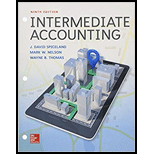
Concept explainers
(1)
Pension plan: This is the plan devised by corporations to pay the employees an income after their retirement, in the form of pension.
Projected benefit obligation (PBO): This is the estimated present value of future retirement benefits, accumulated based on the future compensation levels.
To mention: The changes in PBO for the qualified plans, for Corporation T, for the years ended January 30, 2016 (2015) and January 31, 2015 (2014)
(2)
Plan assets: The assets which are used to satisfy the postretirement obligation, are held as a pension fund by the trustee, to invest the employer contributions,
To mention: The changes in plan assets for the qualified plans, for Corporation T, for the years ended January 30, 2016 (2015) and January 31, 2015 (2014)
(3)
Funded status: The net difference of the total of projected benefit obligation (PBO) and pension plan assets are referred to as funded status. If the balance of PBO is more than plan assets, the difference is referred to as underfunded status, and reported as net pension liability on the
To indicate: Whether the pension plan of Corporation T are underfunded or overfunded, for the years ended January 30, 2016 (2015) and January 31, 2015 (2014)
(4)
Pension expense: Pension expense is an expense to the employer paid as compensation after the completion of services performed by the employees.
Pension expense includes the following components:
- Service cost
- Interest cost
- Expected return on plan assets
- Amortization of prior service cost
- Amortization of net loss or net gain
To indicate: The components of pension expense for Corporation T, for the years ended January 30, 2016 (2015), January 31, 2015 (2014), and February 1,2014 (2013)
Want to see the full answer?
Check out a sample textbook solution
Chapter 17 Solutions
INTERMEDIATE ACCOUNTING(LL)-W/CONNECT
- PLEASE HELParrow_forwardOne company might depreciate a new computer over three years while another company might depreciate the same model computer over five years...and both companies are right. True Falsearrow_forwardno chatgpAccumulated Depreciation will appear as a deduction within the section of the balance sheet labeled as Property, Plant and Equipment. True Falsearrow_forward
- No ai Depreciation Expense is shown on the income statement in order to achieve accounting's matching principle. True Falsearrow_forwardno aiOne company might depreciate a new computer over three years while another company might depreciate the same model computer over five years...and both companies are right. True Falsearrow_forwardno ai An asset's useful life is the same as its physical life? True Falsearrow_forward
- no ai Depreciation Expense reflects an allocation of an asset's original cost rather than an allocation based on the economic value that is being consumed. True Falsearrow_forwardThe purpose of depreciation is to have the balance sheet report the current value of an asset. True Falsearrow_forwardDepreciation Expense shown on a company's income statement must be the same amount as the depreciation expense on the company's income tax return. True Falsearrow_forward

 AccountingAccountingISBN:9781337272094Author:WARREN, Carl S., Reeve, James M., Duchac, Jonathan E.Publisher:Cengage Learning,
AccountingAccountingISBN:9781337272094Author:WARREN, Carl S., Reeve, James M., Duchac, Jonathan E.Publisher:Cengage Learning, Accounting Information SystemsAccountingISBN:9781337619202Author:Hall, James A.Publisher:Cengage Learning,
Accounting Information SystemsAccountingISBN:9781337619202Author:Hall, James A.Publisher:Cengage Learning, Horngren's Cost Accounting: A Managerial Emphasis...AccountingISBN:9780134475585Author:Srikant M. Datar, Madhav V. RajanPublisher:PEARSON
Horngren's Cost Accounting: A Managerial Emphasis...AccountingISBN:9780134475585Author:Srikant M. Datar, Madhav V. RajanPublisher:PEARSON Intermediate AccountingAccountingISBN:9781259722660Author:J. David Spiceland, Mark W. Nelson, Wayne M ThomasPublisher:McGraw-Hill Education
Intermediate AccountingAccountingISBN:9781259722660Author:J. David Spiceland, Mark W. Nelson, Wayne M ThomasPublisher:McGraw-Hill Education Financial and Managerial AccountingAccountingISBN:9781259726705Author:John J Wild, Ken W. Shaw, Barbara Chiappetta Fundamental Accounting PrinciplesPublisher:McGraw-Hill Education
Financial and Managerial AccountingAccountingISBN:9781259726705Author:John J Wild, Ken W. Shaw, Barbara Chiappetta Fundamental Accounting PrinciplesPublisher:McGraw-Hill Education





